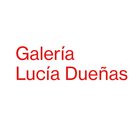WOMEN IN CLOTH: NARRATIVES OF THE INTIMATE Rosita D'Agrosa 07.11 - 29.12.2024

The MCC exhibition hall ( Mieres Cultural Center) will host the exhibition Women in Fabric: Narratives of the Intimate by artist Rosita D'Agrosa from November 7 to December 29. The exhibition is held to coincide with November 25: International Day for the Elimination of Violence against Women .
The work of Rosita D'Agrosa (Salerno, 1989) focuses on the female body and the changes it undergoes. Textile sculptures, site-specific installations and paintings are the main media that D'Agrosa uses to carry out her research-analysis of the female body. The use of different techniques and materials, together with the presence of objects and their capacity to transmit a message, is characteristic of her work.
The career of this young artist is represented by a very diverse body of work divided into several series. In all of them there is an anatomical interest that indicates a personal knowledge of women:
“Much of my artistic research focuses on the body, specifically on my body, a female body, in an attempt to make the latter the portrait of a free and profound intimacy. The representation of the vulva: embroidered, made with fabrics or painted, has become over the years, along with the icon of the uterus or panties, an emblem of my poetics.”

Rosita D'Agrosa
Absorbent , hand-embroidered and hand-painted linen handkerchiefs that become the surface on which she deposits her intimate emotional notes through a symbolic vocabulary.
They are antique sanitary napkins full of meaning, history and poetry linked to femininity. They belonged to her family's wedding trousseau from the 1950s.


Mutatis Mutanda , a series of 28 panties resembling the 28 days of the menstrual cycle. Each pair of panties praises femininity and change as a metaphor: a rosebud, a spoon, an embroidery or a drawing that alludes to the shape of the vulva, the uterus or the ovaries.
In Mutatis Mutanda, women's underwear, an object of everyday use, becomes a poetic tool for reflection.


Breakfasts on the Grass , a series inspired by the works Le Déjeuner sur l'Herbe by Manet and Le déjeuner en fourrure by Meret Oppenheim. They are small installations or objects intervened with embroidery. Cups with an embroidered uterus, dessert plates with moths or thorns inside arranged on small tablecloths as if they were sweets displayed in a pastry shop. Pocket mirrors with embroidered messages such as: "Nosce te ipsum" (know thyself), represent a refined provocation on the female condition present and past.

Breakfasts on the grass

Cages for Thoughts: embroidered sculptures in which a phrase or a message is repeated. The words are sewn, knotted or woven into a false container, where the imprisoned thoughts grow and make noise until they manage to blossom and break free.


Bowels Project , soft, pale pink fabric sculptures representing entrails. “Idealized” intestines that appear as a tangle of tentacles hanging from the walls to the floor.
Erica Romano (art historian and curator) referred to the Bowels project as: “fabric sculptures that make subtle humor about our second brain, because emotions tend to be visceral reactions that go first through the gut, and then rise or fall as appropriate.”


Bowels Project (detail)
“For an artist, art can be a tool of communication and language through which to break taboos, preconceptions and stereotypes, especially those that unfortunately still persist in the female universe. This is exactly what I try to do in my work: break down walls, use art as a tool of expression, freedom, dialogue, narration and testimony.”
Rosita D'Agrosa
🗓️ from November 7th to December 29th
🕘 Wednesday, Thursday and Friday from 4:00 p.m. to 7:30 p.m.
🕘 Saturday and Sunday from 11:00 a.m. to 2:00 p.m. and from 4:00 p.m. to 7:30 p.m.
📍 MCC, Mieres Cultural Center, Jerónimo Ibrán Street, 10
*Exhibition funded by the Department of Equality and Feminism of the Mieres City Council.
















